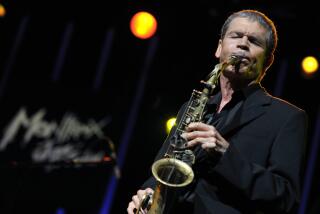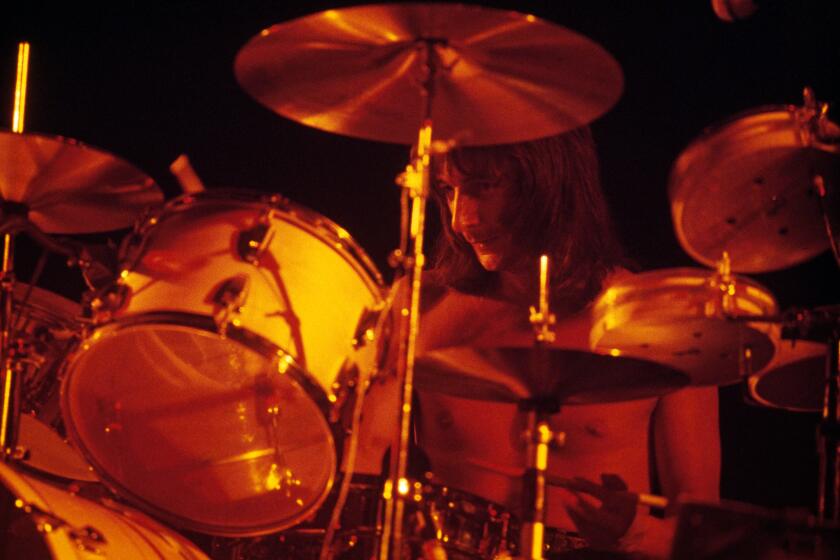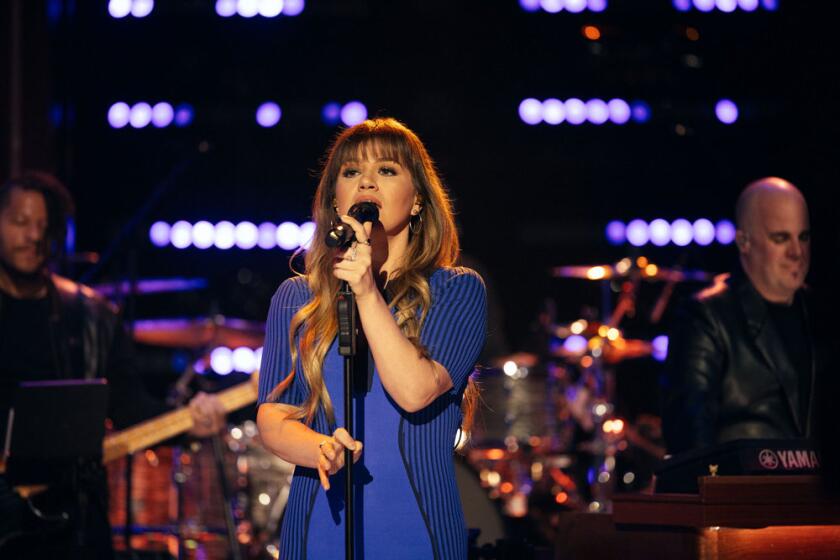POP MUSIC REVIEW : Prof. Dan Crary Does a Class Act : The guitarist’s two-hour concert at the Laguna Niguel venue was a must course for anybody with a regard for folk-based acoustic music.
Every student knows that the best professors are the ones who throw away the textbooks and dazzle with their own kind of enthusiasm and expertise.
That quality suffused Dan Crary’s exposition of traditional folk guitar music Saturday night at Shade Tree Stringed Instruments. In collegiate parlance, Crary’s two-hour concert was a must course for anybody with a regard for folk-based acoustic music.
As a full-time professor of speech communication at Cal State Fullerton for the past 17 years, Crary is accustomed to giving courses. In his parallel career as a bluegrass musician, he has communicated well enough with a flat pick and strings to rank high in the academy of internationally known players. On his albums, Crary gets help from such front-rank personnel as New Grass Revival alumni Sam Bush, Bela Fleck and John Cowan, Desert Rose Band member Herb Pederson and fiddler Byron Berline.
At the Shade Tree, Crary didn’t need any help to put on an involving concert. Two hands (applied with consistently astonishing dexterity and invention to both a six-string and a 12-string guitar), some good jokes, and a teacher’s enjoyment of sharing knowledge (and also stories drawn from his own family life) made for a well-rounded evening.
Before saying a word, Crary presented credentials. He was hardly a minute into the show when he let fly with racing licks that sounded like the fret-board equivalent of Fred Astaire dancing up, then down a staircase. It was one of those “how did he do that?” moments. Soon, though, it became clear that Crary was merely establishing a norm. What at first seemed like a high-wire act fraught with risks became recognizable for what it really was: a steady, assured demonstration of excellence made possible by intense concentration and deft execution.
As Crary played, something always seemed to be stirring and probing, departing from the routine. Unwilling to settle into a predictable rut during any given passage, he also mixed things up from song to song, effectively staving off sameness.
Bluegrass was a homing point, but departures were many as Crary played country tunes, Celtic reels, a little flamenco music and contemporary folk songs, some of them his own. At the end came a further stretch: a driving Jimmie Rodgers blues song and an introspective, classically informed piece that Crary said will be on his next album.
Crary’s singing was unexceptional, but he had a journeyman’s competence. One of his original songs, “Goodnight Girl,” was an emotionally complex evocation of both the faithfulness that can sustain a long-distance relationship and the doubt that inevitably arises to cast a shadow on it.
One sign of Crary’s zest as a player was his ability to bring alive standards such as “Turkey in the Straw” and “Wabash Cannonball.” In his restless hands, the venerable “Cannonball” was transformed from an old chestnut about railroading days into a celebration of motion and freedom.
More to Read
The biggest entertainment stories
Get our big stories about Hollywood, film, television, music, arts, culture and more right in your inbox as soon as they publish.
You may occasionally receive promotional content from the Los Angeles Times.







